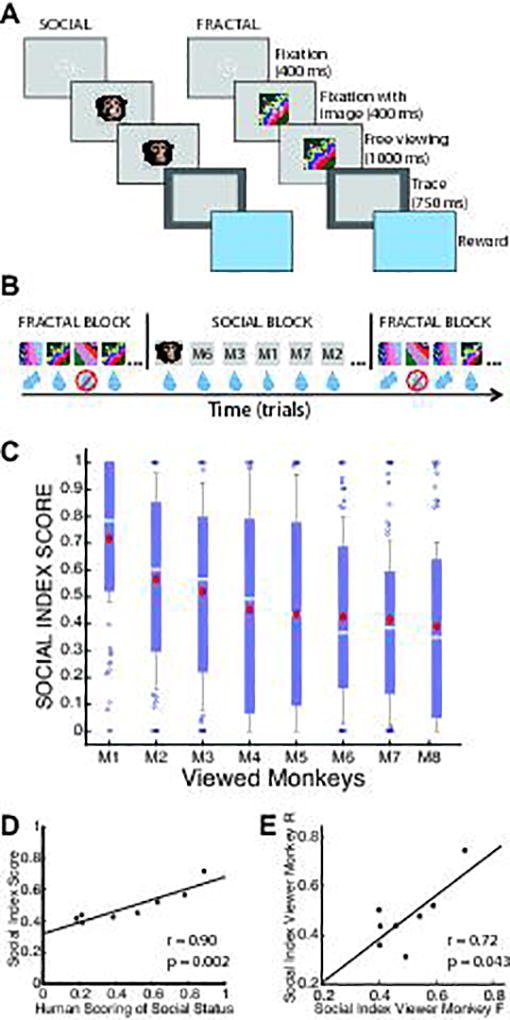Figure 1. Task and behavioral measures.

A, Sequence of events in behavioral task. Monkeys view images of the faces of other monkeys who reside within their housing room (left panels) or fractal images (right panels). Successful fixation results in reward delivery. B, Behavioral task interleaving social and non-social (fractal) trial blocks. In fractal blocks, different images are associated with different reward amounts, unlike in trials for the social block. C, Social Index from behavioral measures of hierarchical assessment observed during the recording sessions plotted for each viewed monkey, M1 through M8, where M1 is the Alpha monkey and M8 the most submissive one. Kruskal-Wallis test (Chi-sq(7,535)=47.11, p < 1e-07), Dunn’s post-hoc: M1 different from M3 (p = 0.023), M4 (p < 1e-03), M5 (p < 1e-03), M6 (p < 1e-04), M7 (p < 1e-04), M8 (p < 1e-04); M2 vs. M8, p = 0.074). Data represent the average of the 4 behavioral measures used to compute the social index across the sessions (n=17) (see Methods and Supp. Fig. 2). Red diamonds represent mean, white lines represent median, blue bars and whiskers represent 75th and 85th percentiles respectively, blue circles represent data points beyond the whiskers limits. D, Social index score plotted as a function of the scoring of the colony hierarchy by human observer (see Methods, Pearson’s correlation coefficient (two-sided), r = 0.90, p=0.002). E, Index score for each viewer monkey plotted against each other (Pearson’s correlation coefficient (two-sided), r = 0.72, p=0.043).
